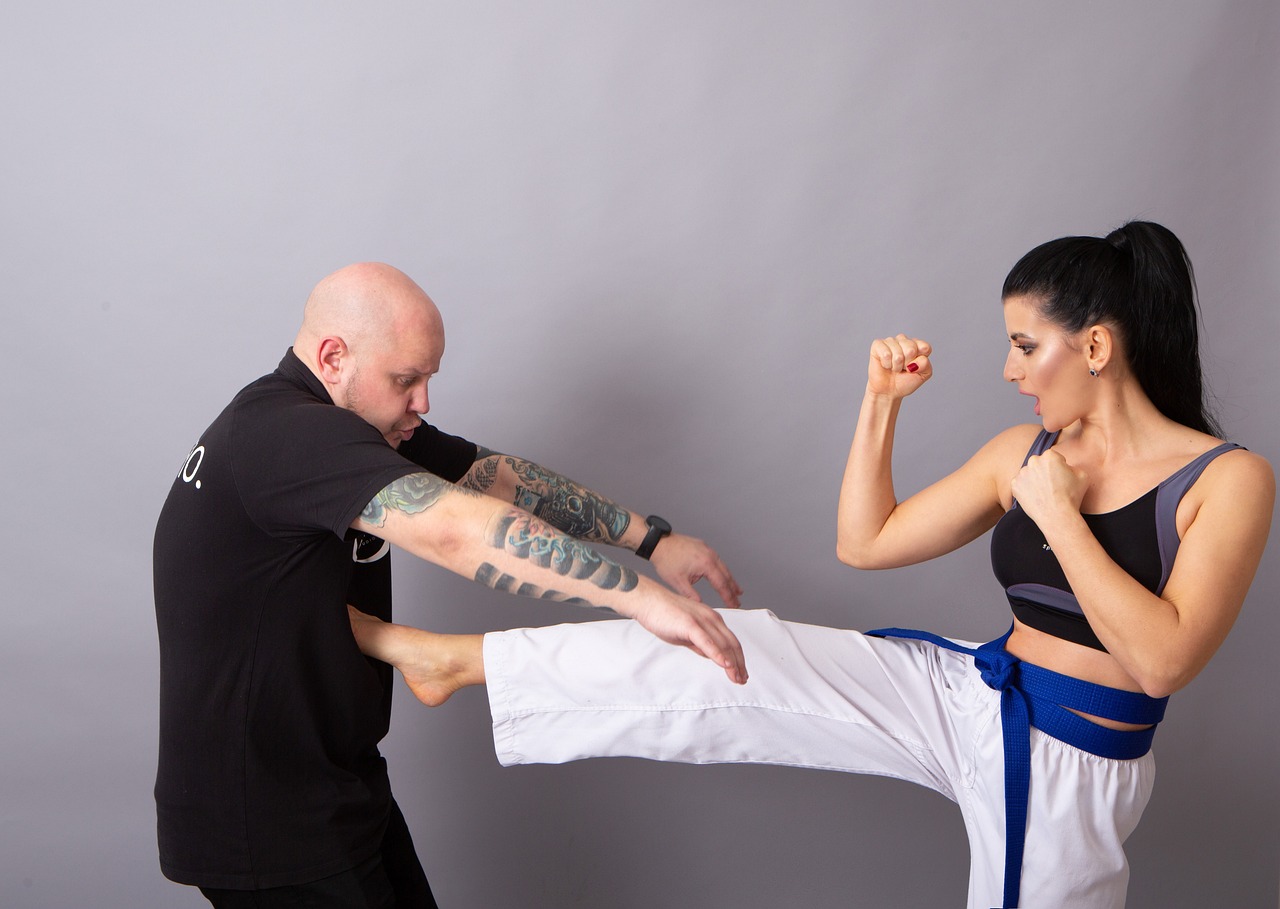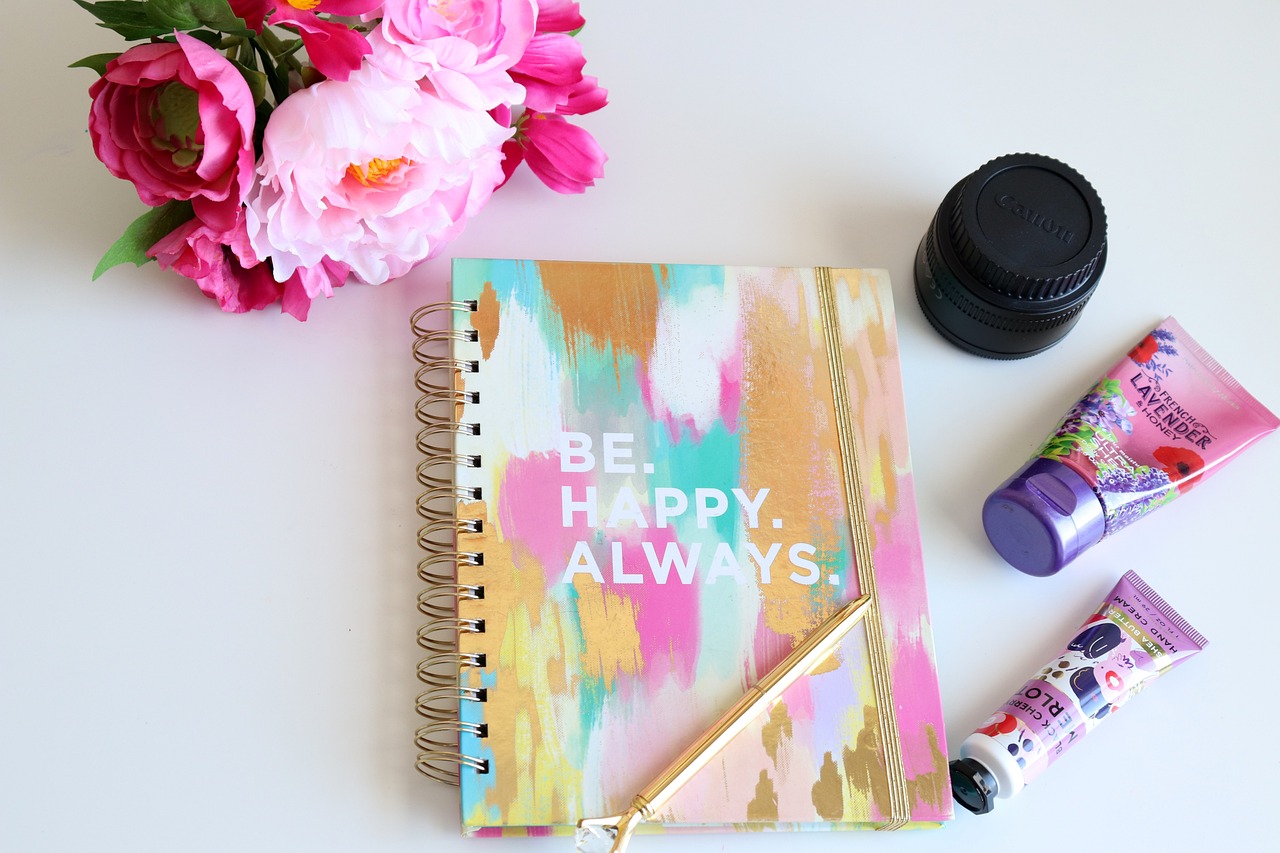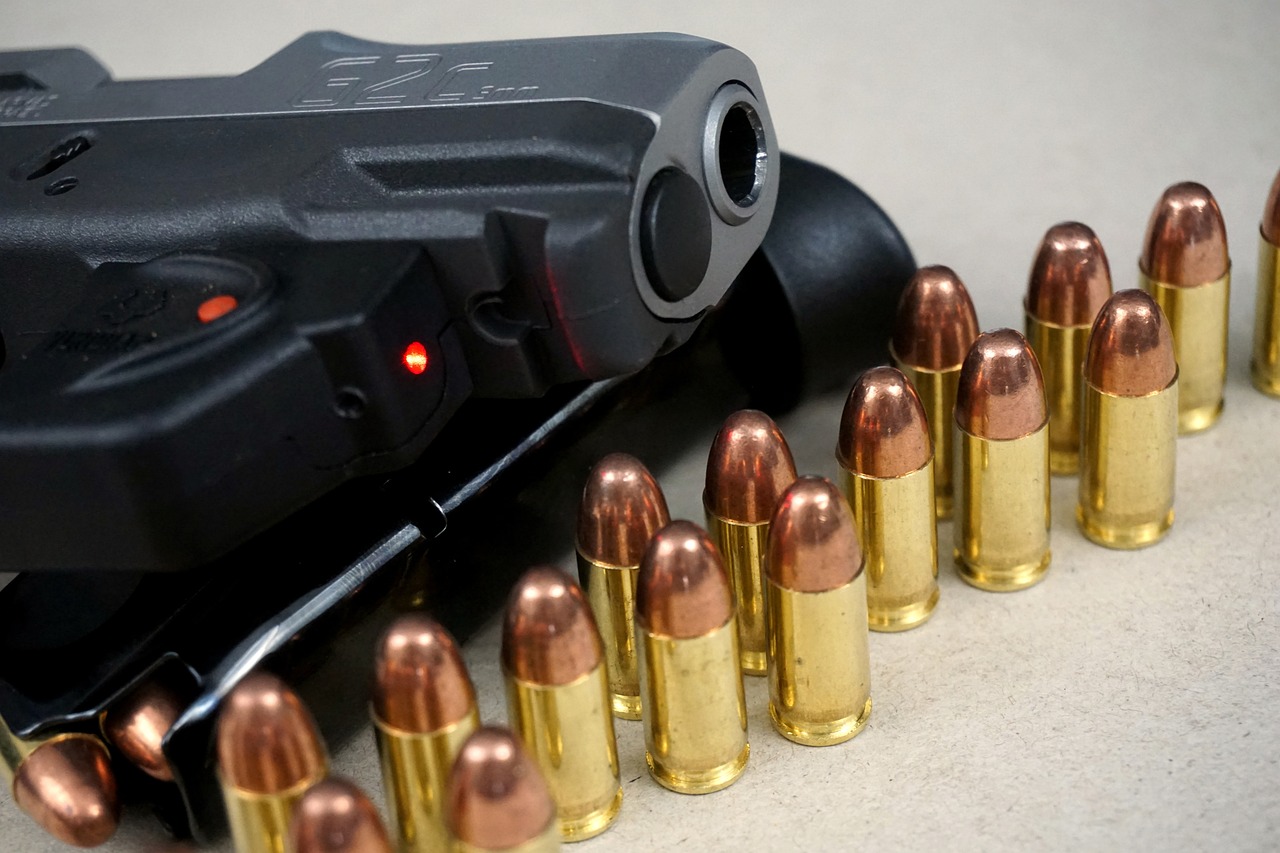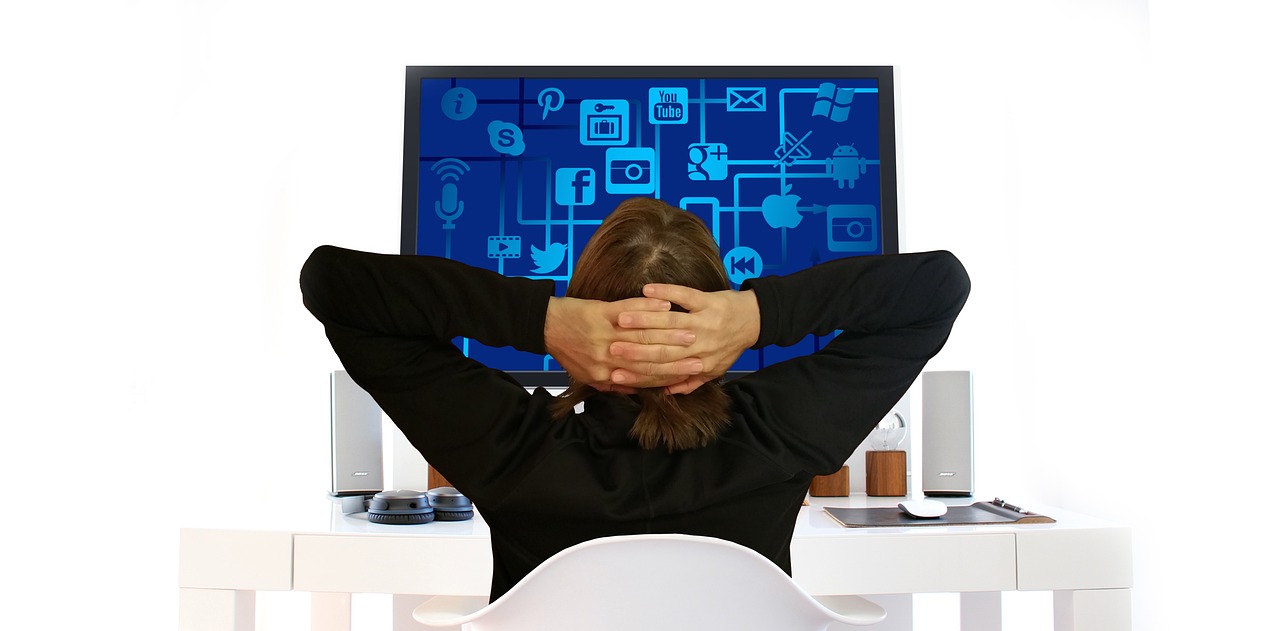Simple and Effective Self-Defense Techniques for Pedestrians
In today's world, where urban landscapes can sometimes feel daunting, knowing how to protect yourself is not just a luxury—it's a necessity. Self-defense techniques for pedestrians are essential for enhancing personal safety and boosting confidence while navigating busy streets. Imagine walking down a bustling avenue, feeling empowered and aware, rather than anxious and vulnerable. This article delves into practical self-defense strategies that anyone can learn and apply, transforming ordinary pedestrians into self-assured individuals ready to face potential threats.
Self-defense is more than just a physical skill; it's a mindset that empowers individuals to take control of their safety. In urban environments, where the unexpected can happen at any moment, being equipped with self-defense knowledge can make a world of difference. It’s about fostering a sense of security in everyday life, especially when venturing into unfamiliar areas. Think of self-defense as a safety net—one that can catch you when life throws you a curveball. By learning these techniques, you're not only protecting yourself but also promoting a culture of safety within your community.
Before diving into specific techniques, it's crucial to familiarize yourself with some fundamental self-defense principles. These principles—awareness, avoidance, and de-escalation—act as the foundation upon which effective self-defense is built. They can significantly reduce the risk of confrontations and enhance personal safety. By understanding these concepts, you can navigate various situations with a sense of preparedness and confidence.
Situational awareness is all about being alert to your surroundings. It involves recognizing potential threats and understanding how to respond appropriately. Imagine you're walking down a street; instead of being glued to your phone, you take a moment to observe the people around you, the layout of the area, and any unusual behavior. This vigilance can be your first line of defense. By developing situational awareness, you can often avoid dangerous situations before they escalate, ensuring a safer experience while out and about.
Learning to identify potential threats in your environment is a critical skill for pedestrians. This means being aware of not just the people around you but also the context—like dark alleys, poorly lit areas, or individuals acting suspiciously. By staying alert and recognizing these warning signs, you can take proactive measures to avoid danger. For instance, if you notice someone following you, trust your instincts and change your route or seek a crowded area. Remember, it's better to be safe than sorry.
Did you know that adopting a confident posture can deter potential attackers? When you walk with your head held high, shoulders back, and a purposeful stride, you send a message to others that you are aware and capable of defending yourself. Confidence is like a shield; it can often prevent confrontations before they even start. So, next time you step out, think of your posture as your first line of defense. It’s not just about looking tough; it’s about radiating self-assurance.
While awareness and posture are essential, knowing a few effective strikes and techniques can empower you to defend yourself if confronted. Simple moves like palm strikes, knee strikes, or even a well-placed elbow can provide you with the means to escape from a dangerous situation quickly. The goal is not to engage in a fight but to create an opportunity to get away. Think of these techniques as your emergency toolkit—something you hope to never use but are grateful to have when the need arises.
Everyday items can be surprisingly effective when it comes to self-defense. Keys, pens, and even a sturdy umbrella can serve as improvised weapons. For example, holding your keys between your fingers can create a makeshift striking tool. Similarly, a pen can be used to jab at an attacker's pressure points. The beauty of these techniques lies in their accessibility; you don’t need to carry specialized weapons to protect yourself. Instead, you can utilize what you already have on hand, making self-defense practical and feasible for everyone.
Understanding how to use improvised self-defense tools can significantly increase your confidence and readiness to respond effectively to threats. Whether it's a bottle of water, a belt, or even your backpack, these items can be transformed into effective self-defense tools with a little creativity. Imagine being in a tight spot and realizing that your everyday belongings can help you escape. This knowledge not only prepares you for the unexpected but also reinforces the idea that you are capable of handling challenging situations.
It's essential to be aware of the legal implications surrounding self-defense. Different regions have varying laws regarding what constitutes acceptable self-defense, and understanding these can help you navigate situations without legal repercussions. For example, using excessive force can lead to serious consequences, even if you were acting in self-defense. Therefore, being informed about your rights and responsibilities is crucial for any pedestrian looking to protect themselves. Remember, the goal is to defend, not to escalate a situation unnecessarily.
- What is the best self-defense technique for beginners? Starting with basic strikes and practicing situational awareness can be very effective for beginners.
- Can everyday items really be used for self-defense? Yes! Items like keys, pens, and umbrellas can serve as effective tools for self-defense when used correctly.
- Is it legal to use self-defense techniques in all situations? No, the legality of self-defense varies by location, so it’s important to understand the laws in your area.
- How can I improve my situational awareness? Regularly practice being aware of your surroundings, and observe people and situations as you navigate your environment.

Understanding the Importance of Self-Defense
Self-defense is more than just a set of physical techniques; it’s a vital skill that empowers individuals to protect themselves in potentially dangerous situations. In today’s world, where urban environments can sometimes feel overwhelming, having the ability to defend oneself can significantly enhance personal safety and boost confidence. Imagine walking down a busy street, feeling secure and aware, rather than anxious and vulnerable. This sense of security is not just about physical strength; it’s about knowledge, awareness, and the ability to react appropriately when faced with a threat.
Every pedestrian has the right to feel safe while navigating their surroundings. Unfortunately, the reality is that threats can arise unexpectedly. By learning self-defense techniques, individuals can equip themselves with the tools needed to respond effectively. It’s like having a safety net; it doesn’t mean you will fall, but if you do, you’ll have something to catch you. Moreover, self-defense training can foster a sense of empowerment, turning fear into confidence. When people know they can defend themselves, they are less likely to be targeted by potential attackers.
Furthermore, understanding self-defense goes hand in hand with developing a heightened sense of situational awareness. This means being conscious of your environment and recognizing when something feels off. For instance, if you notice someone following you, instead of panicking, you can calmly assess the situation and decide on the best course of action. This proactive mindset not only helps in avoiding dangerous encounters but also builds a foundation for effective self-defense strategies.
To put this into perspective, consider the following points that highlight the importance of self-defense:
- Empowerment: Self-defense training gives individuals the confidence to navigate their daily lives without fear.
- Prevention: Learning how to identify potential threats can help in avoiding dangerous situations altogether.
- Response: In the event of an encounter, knowing how to react can make all the difference in ensuring personal safety.
In conclusion, the importance of self-defense cannot be overstated. It is not merely about physical confrontations; it is about cultivating a mindset of awareness and readiness. By investing time in learning self-defense techniques, pedestrians can enhance their sense of security and confidence, making their urban experiences not only safer but also more enjoyable.

Basic Self-Defense Principles
When it comes to self-defense, understanding the basic principles can be a game changer. It’s not just about physical techniques; it’s also about mindset and awareness. Think of self-defense as a mental shield that protects you from harm. By familiarizing yourself with these principles, you can significantly reduce your risk of confrontations and enhance your personal safety in various situations.
First and foremost, let’s talk about awareness. This is your first line of defense against potential threats. Imagine walking through a busy street, headphones in, completely oblivious to your surroundings. That’s like walking into a lion's den wearing a steak suit! Being aware means you’re tuned into what’s happening around you. It’s about noticing the people around you, the atmosphere, and any unusual behavior. This heightened sense of awareness can alert you to potential dangers before they escalate.
Next up is avoidance. Sometimes, the best self-defense is avoiding a confrontation altogether. This means recognizing when a situation feels off and choosing to walk away. For example, if you’re approached by someone who seems aggressive, your gut instinct might tell you to back off. Trust that feeling! Avoidance is all about listening to your instincts and making smart choices to keep yourself safe. Remember, it’s not about being a hero; it’s about being smart.
Now, let’s dive into de-escalation. This technique is all about calming down a potentially volatile situation. If you find yourself in a confrontation, staying calm and using a non-threatening tone can help diffuse tension. You might say something like, “I don’t want any trouble,” or “Let’s just walk away from this.” It’s like trying to put out a fire with a gentle breeze instead of throwing gasoline on it! Your goal is to shift the energy of the situation from aggressive to peaceful.
In addition to these principles, it’s vital to maintain a confident posture. Did you know that how you carry yourself can signal to others whether you’re a target? Standing tall, keeping your head up, and making eye contact can deter potential attackers. Think of yourself as a lion in the jungle, exuding confidence and strength. When you project this kind of energy, you’re less likely to be seen as an easy target.
Finally, let’s not forget the importance of practice. Just like any skill, self-defense techniques require practice to become second nature. Consider enrolling in a self-defense class where you can learn and practice these principles in a safe environment. It’s like learning to ride a bike; the more you practice, the more confident you become!
In summary, the basic self-defense principles of awareness, avoidance, de-escalation, maintaining a confident posture, and regular practice are essential for pedestrians. By integrating these principles into your daily life, you can enhance your personal safety and navigate urban environments with greater confidence.
- What should I do if I feel threatened? Trust your instincts and remove yourself from the situation if possible. If you can't, try to de-escalate verbally.
- Are self-defense classes worth it? Absolutely! They teach you practical skills and boost your confidence in handling potential threats.
- Can I use self-defense techniques if I am attacked? Yes, but be aware of the legal implications in your area. Always aim to escape rather than escalate.

Situational Awareness
When it comes to personal safety, is your first line of defense. Imagine walking through a bustling city street, surrounded by people and noise. It’s easy to get lost in your thoughts or distracted by your phone. But what if I told you that the key to staying safe lies in being fully present in your environment? By honing your ability to observe and assess what’s happening around you, you can significantly reduce your chances of becoming a target for crime.
Situational awareness involves more than just seeing what’s in front of you; it’s about actively engaging with your surroundings. This means noticing the details: the people around you, their behaviors, and any unusual activities. For instance, if you notice someone loitering in a suspicious manner or a group of individuals acting aggressively, your instincts should kick in, prompting you to either change your route or find a safe space. Think of it as tuning into the world around you, much like a musician fine-tuning their instrument to catch every note.
To enhance your situational awareness, consider the following tips:
- Stay off your phone: When you’re engrossed in your screen, you’re missing crucial cues from your environment. Keep your phone in your pocket or bag when walking in unfamiliar areas.
- Trust your instincts: If something feels off, it probably is. Your gut feelings are often based on subconscious observations, so listen to them.
- Scan your surroundings: Make it a habit to look around every few minutes. Identify exits, potential threats, and safe havens.
Moreover, it’s essential to practice active listening. This means not only hearing the sounds around you but also interpreting them. Are there raised voices? Is there a commotion nearby? Such sounds can alert you to potential trouble before it escalates. By developing this habit, you become more attuned to your environment, much like a deer sensing danger in the woods.
In essence, situational awareness is about being proactive rather than reactive. It’s like having a mental map of your surroundings that helps you navigate safely. By adopting this mindset, you empower yourself to recognize threats early and respond effectively. Remember, safety is not just about physical techniques; it’s also about cultivating a mindset that prioritizes awareness and vigilance.
Q1: What is situational awareness?
A1: Situational awareness is the ability to perceive and understand your surroundings, allowing you to identify potential threats and make informed decisions to ensure your safety.
Q2: How can I improve my situational awareness?
A2: You can improve your situational awareness by staying alert, avoiding distractions like your phone, trusting your instincts, and regularly scanning your environment for unusual activities.
Q3: Is situational awareness only important for self-defense?
A3: No, situational awareness is valuable in various aspects of life, including driving, traveling, and even in workplace settings, as it helps you make better decisions and avoid potential dangers.

Identifying Potential Threats
When it comes to personal safety, being able to identify potential threats is an essential skill that every pedestrian should cultivate. Imagine walking down a bustling street, surrounded by people, yet feeling a sense of unease. This feeling often stems from an inability to recognize danger. By honing your awareness, you can transform that discomfort into confidence. So, how do you start identifying potential threats in your environment?
Firstly, it’s crucial to develop a keen sense of situational awareness. This means not just seeing what's in front of you, but also being aware of the people around you, their behaviors, and the overall atmosphere. For example, if you notice someone loitering in a suspicious manner or a group of individuals behaving aggressively, these can be red flags. It’s like being a detective in your own life—always on the lookout for clues that something might be off.
Next, consider the context of your surroundings. Are you in a dimly lit alleyway or a crowded marketplace? Different environments come with varying levels of risk. For instance, crowded places might provide safety in numbers, but they can also be hotspots for pickpockets. Conversely, secluded areas can be quiet but may pose a higher threat if someone with malicious intent is nearby. Always ask yourself, “What would I do if something went wrong here?” This mental rehearsal can prepare you for real-life scenarios.
Additionally, you should pay attention to body language. People often communicate more through their actions than their words. A person who is pacing back and forth, avoiding eye contact, or exhibiting aggressive gestures may be a potential threat. Conversely, someone who seems calm and collected is less likely to pose a danger. Trust your instincts; if something feels off, it probably is.
Lastly, let’s not forget about technology. In today’s world, our smartphones are not just for communication; they can be invaluable tools for safety. Apps that share your location with trusted friends or alert authorities can provide an extra layer of security. However, be cautious not to become so engrossed in your phone that you lose sight of your surroundings. Remember, being aware is your first line of defense.
In summary, identifying potential threats involves a mix of awareness, observation, and intuition. By training yourself to recognize the signs of danger, you empower yourself to take action before a situation escalates. The streets can be unpredictable, but with the right mindset and skills, you can navigate them with confidence and safety.
- What should I do if I feel threatened? Trust your instincts and remove yourself from the situation as quickly as possible. If necessary, seek help from authorities or bystanders.
- Are there specific behaviors that indicate someone may be a threat? Yes, signs such as aggressive body language, erratic movements, or persistent following can indicate a potential threat.
- How can I improve my situational awareness? Practice being present in your environment, observe people and their behaviors, and engage in activities that require focus, such as martial arts or self-defense classes.
- Is it safe to confront a potential threat? Only confront a threat if you feel confident and safe to do so; otherwise, it’s often best to retreat and seek help.

Maintaining a Confident Posture
When it comes to self-defense, one of the most powerful tools you have at your disposal is your body language. Maintaining a confident posture can be a game-changer in deterring potential threats. Imagine walking down a busy street, and instead of slouching or looking down at your phone, you stand tall, shoulders back, and head held high. This simple act not only makes you appear more self-assured but also sends a message to anyone around that you are aware and capable of handling yourself. It’s like wearing an invisible armor that can ward off unwanted attention.
But how exactly do you achieve this confident demeanor? It’s about more than just physical stance; it’s a combination of mental and emotional readiness. Think about it: when you feel good about yourself, your body naturally reflects that. Your posture becomes an extension of your inner strength. Here are some key aspects to consider:
- Eye Contact: Making eye contact with people around you not only shows confidence but also helps you gauge your environment. It’s a subtle way to communicate that you are aware and engaged.
- Body Orientation: Face the direction you are walking. This openness signals confidence and readiness, making you less of a target.
- Relaxed Yet Alert: While you want to appear relaxed, it’s crucial to stay alert. This balance can be achieved through deep breathing and mindfulness, allowing you to stay calm while being aware of your surroundings.
Moreover, practicing good posture can improve your overall well-being. Studies have shown that standing tall can boost your mood and reduce stress. So, not only are you preparing yourself for potential confrontations, but you’re also enhancing your daily life. It’s a win-win! Think of it this way: if you were a lion, you wouldn’t slouch while walking through the savanna. You’d strut with pride, knowing you command respect. The same principle applies to you as a pedestrian navigating urban environments.
Incorporating these elements into your daily routine can make a significant difference. Try standing in front of a mirror and practicing your posture. You might feel a bit silly at first, but soon enough, it will become second nature. Remember, the goal is to embody confidence, making it a part of who you are. When you walk with purpose and poise, you’re not just an ordinary pedestrian; you’re a force to be reckoned with!

Effective Strikes and Techniques
When it comes to self-defense, knowing a few effective strikes and techniques can make all the difference in a tense situation. Imagine you're walking down a busy street, and suddenly you feel threatened. What do you do? Panic? Freeze? Or do you tap into your inner strength and use some simple techniques to defend yourself? The latter is what we aim for! By mastering a handful of strikes, you can empower yourself and enhance your ability to escape from dangerous situations quickly.
One of the most important aspects of self-defense is understanding that you don’t need to be a martial arts expert to protect yourself. In fact, even basic strikes can be incredibly effective if executed correctly. Here are a few techniques you might find useful:
- Palm Strike: This is a powerful technique where you use the palm of your hand to strike an attacker's nose or chin. It’s simple yet effective, allowing you to generate a lot of force without risking injury to your fingers.
- Elbow Strike: The elbow is one of the hardest parts of your body, making it an excellent striking tool. Aim for the attacker's face or ribs, and you’ll create a significant impact that can give you the chance to escape.
- Knee Strike: If the attacker is close, a well-placed knee strike to the groin can incapacitate them momentarily, giving you a window to flee.
Now, let’s not forget about the importance of technique over brute strength. You don’t need to be the strongest person in the room; instead, focus on your form and accuracy. For example, when performing a palm strike, ensure you are using the base of your palm and driving through the target, rather than just slapping at it. This not only maximizes the impact but also minimizes the chance of injuring yourself.
Moreover, practicing these techniques can significantly boost your confidence. When you know you have the skills to defend yourself, you walk with a different energy. It’s like wearing an invisible shield that deters potential threats. Remember, attackers often look for easy targets, and displaying confidence can be your first line of defense.
In addition to strikes, incorporating self-defense techniques into your daily routine can be beneficial. For instance, consider practicing your moves in front of a mirror or with a friend. This not only helps with muscle memory but also allows you to see how your posture and movements can affect your overall effectiveness. Just like any skill, practice makes perfect, and the more comfortable you become with these techniques, the better prepared you’ll be in a real-life scenario.
Lastly, while it’s crucial to learn effective strikes, it’s equally important to remember that self-defense is not just about fighting back. It’s about creating opportunities to escape. So, always be aware of your surroundings and look for exits or safe zones. The goal is to get away from danger, not to engage in a prolonged confrontation.
Q: Do I need to be physically strong to defend myself?
A: Not at all! Self-defense is more about technique and strategy than sheer strength. Even a small person can effectively defend themselves with the right techniques.
Q: What if I’m not comfortable striking someone?
A: That’s perfectly okay! Self-defense also involves avoidance and de-escalation techniques, which can be just as effective in keeping you safe.
Q: Is it legal to use self-defense techniques?
A: Yes, but laws vary by location. It’s essential to understand the legal implications of self-defense in your area to ensure you stay within the law while protecting yourself.

Using Everyday Objects as Weapons
In today's fast-paced world, it's essential to recognize that self-defense doesn't always require formal weapons or extensive training. In fact, many of the items we carry every day can serve as effective tools for self-defense in unexpected situations. Imagine walking down a busy street when suddenly you feel threatened; having the knowledge of how to utilize everyday objects can make a significant difference in your safety. Whether it's your keys, a pen, or even a bag, understanding how to turn these common items into self-defense tools can empower you and enhance your confidence.
First off, let’s talk about keys. They are not just for unlocking doors; they can be a powerful self-defense tool. When held between your fingers, keys can act as makeshift knuckles, delivering a sharp jab to an attacker. Just picture this: you’re walking alone and someone approaches you aggressively. Instead of panicking, you grip your keys tightly, ready to defend yourself. This simple action can provide you with a psychological edge and a physical means of protection.
Another everyday item that can be surprisingly effective is a pen. A sturdy pen can be used to jab sensitive areas of an assailant's body, such as the eyes or throat. This can create an opportunity for you to escape. It's almost like having a mini sword in your pocket! Just remember, the goal is not to engage in a fight but to create an opening to get away safely. The next time you sit down to write or take notes, think about how that pen could be more than just a writing tool.
Your bag, whether it’s a purse, backpack, or messenger bag, can also serve as a self-defense weapon. Swinging your bag can create distance between you and an attacker, or you can use it to hit them. Plus, if your bag is heavy enough, it can be quite a force when swung. The key is to remain aware of your surroundings and be prepared to use what you have at your disposal. Think of it as a shield that can also strike when necessary.
Here’s a quick summary of some common objects and their potential uses in self-defense:
| Object | Potential Use |
|---|---|
| Keys | Jabbing tool when held between fingers |
| Pen | Jab to sensitive areas (eyes, throat) |
| Bag | Swinging to create distance or as a striking tool |
| Umbrella | Can be used to poke or block |
| Cell Phone | Can be thrown to distract or used to hit |
While everyday objects can be useful, it’s crucial to remember that the primary goal of self-defense is to escape a threatening situation. Using these items effectively requires a mindset focused on safety and awareness. Practicing with these objects can help you feel more comfortable and prepared should the need arise. Additionally, always consider the legal implications of using any object for self-defense. It's important to ensure that your actions are justifiable and within the law to avoid any legal repercussions.
In conclusion, the next time you step out, take a moment to assess your surroundings and think about the items you have on you. With a little creativity and awareness, you can transform ordinary objects into powerful tools for self-defense. Remember, confidence and preparedness can be your best allies in any situation.
- Can I use any object for self-defense?
While many objects can be used, it's essential to choose items that you can handle effectively and that won't escalate a situation unnecessarily. - Is it illegal to use everyday objects for self-defense?
It depends on the laws in your area. Always be aware of local self-defense laws to ensure you're acting within legal boundaries. - What should I do if I feel threatened?
Trust your instincts. If you feel uncomfortable, try to remove yourself from the situation as quickly and safely as possible.

Improvised Self-Defense Tools
When it comes to self-defense, the best weapon is often the one you have on hand. can be anything from everyday objects you carry in your bag or pockets to items that are readily available in your environment. Imagine walking down the street and realizing that your keys can serve a dual purpose—not just to unlock your front door but also as a means of protection. This is the essence of using improvised tools for self-defense; it’s about being resourceful and prepared.
Many people overlook the potential of ordinary items. For instance, a pen can become a powerful tool if you know how to use it effectively. In a pinch, you can grip it firmly and aim for sensitive areas such as the eyes or throat of an attacker. Similarly, a water bottle can be utilized not just for hydration but can also be wielded as a blunt force object. The key is to think creatively and remain calm under pressure.
In urban settings, various objects can be transformed into self-defense tools. Here’s a quick list of common items that can be surprisingly effective:
- Keys: Hold them between your fingers, protruding outwards, to create a makeshift weapon.
- Umbrella: Use it to jab or block; it can also be used to create distance between you and an attacker.
- Bag: Swinging a heavy bag can create a distraction or even knock someone off balance.
It's essential to practice using these items in a safe environment. Familiarize yourself with how they feel and how you can wield them effectively. Just as a painter knows their tools, you should feel comfortable with your improvised weapons. This practice can make all the difference in a high-stress situation, where every second counts.
Moreover, understanding the legal implications of using these tools is crucial. While self-defense is often justified, the legality of using an improvised weapon can vary based on the situation and local laws. Always ensure that your actions are necessary and proportionate to the threat you face. This knowledge not only protects you legally but also helps you make better decisions in the heat of the moment.
In conclusion, being aware of your surroundings and knowing how to utilize improvised tools can significantly enhance your self-defense capabilities. The next time you step out, take a moment to consider the items you have with you and how they can serve as a shield against potential threats. Remember, confidence and preparedness are your best allies in any situation.
Q: What are some examples of improvised self-defense tools?
A: Common items include keys, pens, umbrellas, and bags. Each can be used creatively to defend oneself.
Q: Are improvised weapons legal to use for self-defense?
A: The legality varies by location and situation. It’s crucial to understand local laws regarding self-defense.
Q: How can I practice using improvised tools?
A: You can practice in a safe environment, simulating scenarios where you might need to use these tools effectively.
Q: Is it better to avoid confrontation than to use self-defense?
A: Absolutely! The best self-defense is often avoidance. Use situational awareness to steer clear of potential threats.

Legal Considerations in Self-Defense
This article explores practical self-defense techniques that pedestrians can easily learn and apply in real-life situations, enhancing personal safety and confidence while navigating urban environments.
Self-defense is a crucial skill for pedestrians, empowering individuals to protect themselves from potential threats and fostering a sense of security in everyday life, especially in unfamiliar areas.
Familiarizing oneself with fundamental self-defense principles, such as awareness, avoidance, and de-escalation, can significantly reduce the risk of confrontations and enhance personal safety in various situations.
Developing situational awareness involves being alert to one's surroundings, recognizing potential threats, and understanding how to respond appropriately, which is vital for pedestrian safety in urban settings.
Learning to identify potential threats in the environment can help pedestrians take proactive measures to avoid dangerous situations before they escalate, ensuring a safer experience when out and about.
Adopting a confident posture and demeanor can deter potential attackers, as confidence often signals to others that an individual is aware and capable of defending themselves.
Mastering a few effective strikes and techniques can empower pedestrians to defend themselves if confronted, enhancing their ability to escape from dangerous situations quickly.
Everyday items, such as keys or pens, can be utilized for self-defense, providing pedestrians with accessible means to protect themselves in unexpected situations.
Understanding how to use improvised self-defense tools can increase a pedestrian's confidence and readiness to respond effectively to threats, even when formal weapons are unavailable.
When it comes to self-defense, understanding the legal considerations is crucial for anyone looking to protect themselves. Laws surrounding self-defense can vary significantly by jurisdiction, so it’s important to familiarize yourself with local regulations. Generally, the legal framework allows individuals to use reasonable force to protect themselves from imminent harm. However, what constitutes "reasonable" can often be subjective and is typically judged by the circumstances surrounding the incident.
For instance, if someone is faced with an attacker, they may be justified in using physical force to escape. Yet, if that response is deemed excessive—such as using a weapon when the threat was minimal—legal repercussions could follow. Here are some key points to keep in mind:
- Proportionality: The force used in self-defense must be proportional to the threat faced. If a verbal confrontation escalates to physical violence, responding with equal force is generally acceptable.
- Imminence: The threat must be immediate. If you are no longer in danger, any use of force may be viewed as unjustified.
- Retreat: In some areas, the law requires individuals to retreat from a threat if it is safe to do so before resorting to force. However, the "stand your ground" laws in certain states allow individuals to defend themselves without retreating.
It’s also wise to document any self-defense incidents thoroughly. This includes taking notes of the event, gathering witness statements, and, if possible, obtaining video evidence. Such documentation can be invaluable if legal action arises later.
In summary, while self-defense is a fundamental right, it is essential to navigate the legal landscape carefully. Always prioritize understanding your local laws and consider seeking legal advice if you find yourself in a situation where self-defense may be necessary.
- What should I do if I feel threatened? Trust your instincts. If you feel unsafe, try to remove yourself from the situation and seek help if necessary.
- Are there self-defense classes available? Yes! Many community centers and gyms offer self-defense classes tailored for pedestrians.
- What if I have to use self-defense? Ensure you understand the laws in your area regarding self-defense, and try to de-escalate the situation whenever possible.
Frequently Asked Questions
- What are some basic self-defense techniques I can learn quickly?
There are several simple techniques that anyone can learn, such as the palm strike, knee kick, and elbow jab. These moves can be effective in creating space between you and an attacker, allowing you to escape. The key is to practice them regularly so they become second nature.
- How can I improve my situational awareness?
Improving your situational awareness involves training yourself to be more observant. Start by regularly scanning your environment, noting exits, and being aware of people around you. Practicing mindfulness can also help you stay focused and alert, making it easier to spot potential threats.
- Are everyday objects really useful for self-defense?
Absolutely! Everyday items like keys, pens, or even a water bottle can be used as improvised weapons. For instance, holding your keys between your fingers can create a makeshift knuckle duster. It’s all about being resourceful and knowing how to use what you have on hand.
- What should I do if I feel threatened while walking?
If you feel threatened, trust your instincts. Try to leave the situation if possible. If you can’t, make noise to attract attention, use your phone to call for help, or prepare to defend yourself using the techniques you’ve learned. Remember, your safety is the top priority!
- What are the legal implications of self-defense?
Self-defense laws vary by location, but generally, you are allowed to protect yourself from imminent harm. However, it’s important to only use reasonable force and to avoid escalating the situation. Familiarize yourself with local laws to ensure you’re acting within your rights.
- How can I maintain a confident posture?
Maintaining a confident posture is all about body language. Stand tall, keep your shoulders back, and make eye contact with those around you. This not only makes you appear more confident but can also deter potential attackers who might see you as a less vulnerable target.


















